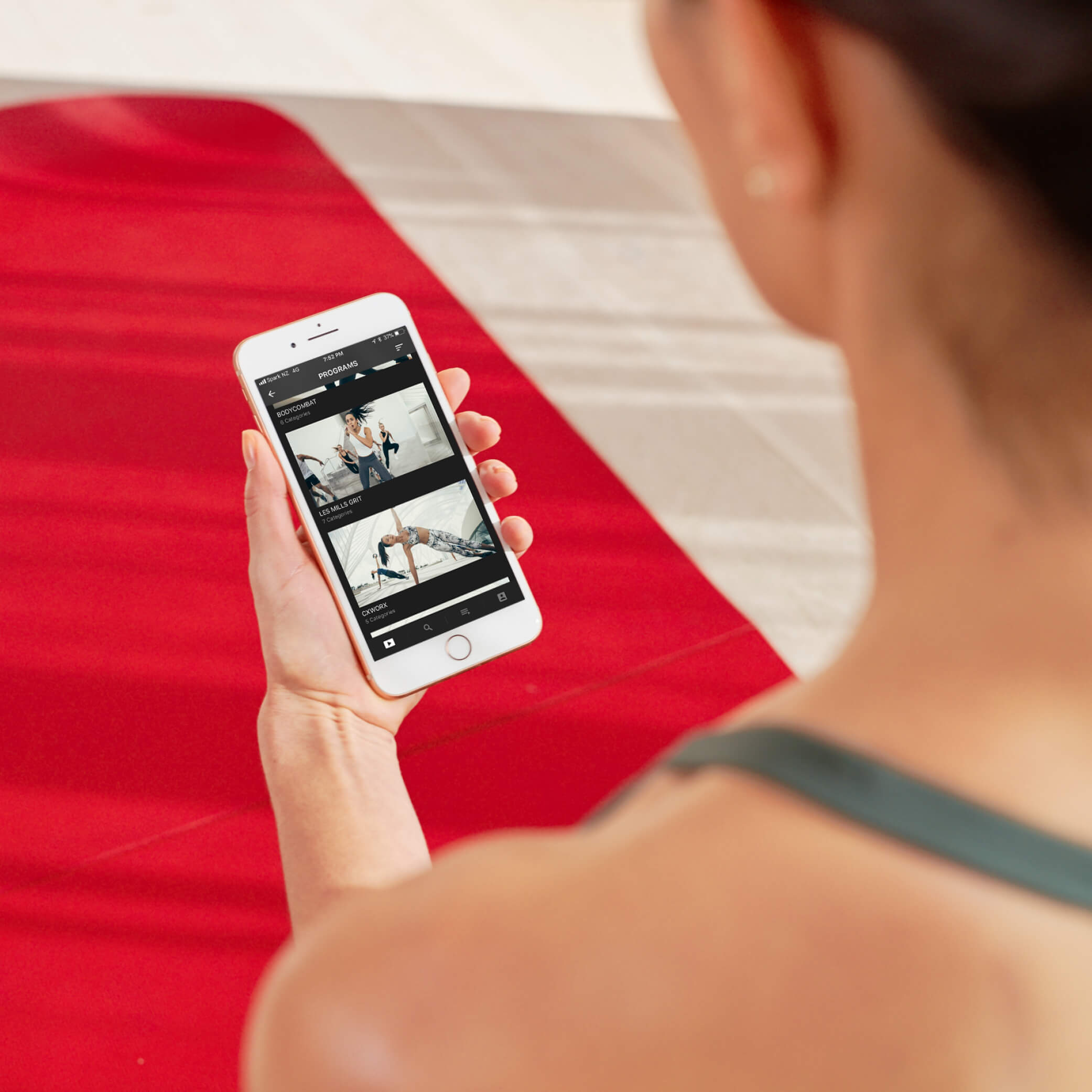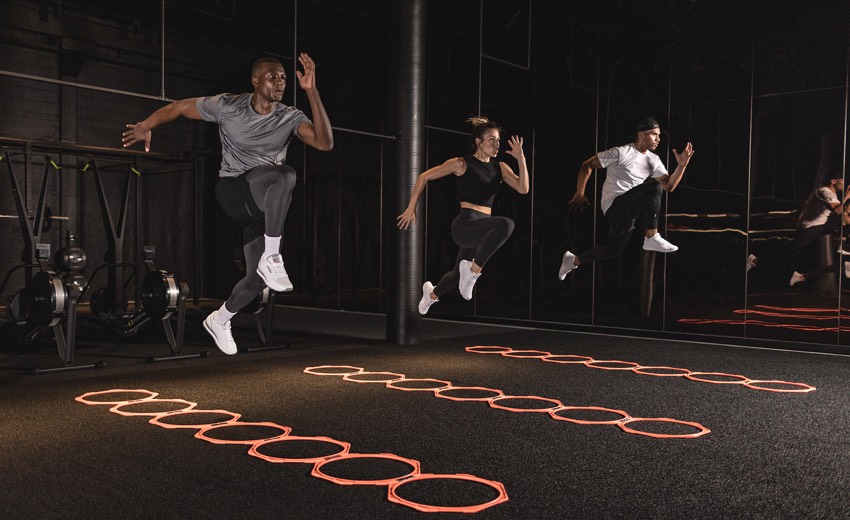
To say fitness is changing would be something of an understatement right now. With two-thirds of the world’s clubs in lockdown, operators are pulling out all the stops to survive the biggest crisis our industry has ever faced.
The who, what, why, where, and how of delivering exercise have been severely disrupted by COVID-19, and many predict that some changes will be permanent.
The Change Curve is in full swing, and we all need to adapt if we are to emerge from the current crisis intact. But there’s one thing that hasn’t really changed at all: ours is still a motivation business. After all, no one owns the patent to the press up, and there’s no finer treadmill than the great outdoors. People come to clubs not just for fitness, but because they want extra motivation to achieve results.
Throughout lockdown, technology has dominated the fitness industry discourse, and clubs have adapted admirably to rollout digital solutions to support their members. But technology isn’t the answer to our challenges, our people are. Technology is still just a tool to help us deliver motivation to members beyond the club. It’s our people – the faces our members know and love – who remain at the heart of these solutions.
In the same way that our rockstar Instructors and personal trainers deliver the most motivational experiences in-club, it’s been the live-stream classes and virtual coaching sessions that have proved most powerful online and lit up our social media feeds.
For all of the technology solutions now available clubs, great people are the only unique selling point that your rivals can’t copy. We’re all working to make the world fall in love with fitness, but it’s the people delivering it that make members fall in love with your club.
At the end of this crisis, members will be yearning for deeper connection and human interactions, so how we leverage and nurture our teams during lockdown will have a major bearing on the success of our relaunches. Here are 6 ways clubs can harness their people to put them on the road to recovery:
1. Add sparkle to your socials
The loneliness of lockdown and remote working has supercharged demand for online communities and shared experiences. Clubs have been quick to put their star players in the limelight on social media, driving discussions and interactions with their members, as well as setting daily challenges.
For Asia-based premium operator Pure International Group, which has seven clubs in Shanghai and two in Beijing, this meant mobilizing all of their team to communicate with members and send daily workouts through their member app.
"In our closed clubs in Shanghai and Beijing, the yoga teachers, the sales team, the PTs and group ex instructors would constantly keep in touch with the members," Pure CEO Colin Grant recently told IHRSA.
“You’ve got to get them engaging with members through social media, to make sure the members know we care about them, even though we’re closed. Send them daily content through social media – home workouts and information on how to eat well.”
Whoever you have posting on social media is representing your brand, so it makes sense to start with your star Instructors and let them lead it out, says Christian Dyer, Membership Engagement and Social Director for Crunch Fitness West Florida.
“They tend to be great personalities and often have decent followings on social media themselves. It’s definitely had a big impact on driving our numbers,” he adds.
“Make sure that whoever you feature is a good representative of the brand, can speak with the right tone of voice and can embody the brand.”

2. Keep the workouts coming
Keeping members updated on social is one thing, but keeping them moving is even more vital for boosting engagement and keeping them on your books. Clubs worldwide are harnessing the skills of their Instructors and PTs to provide digital workouts via member apps and livestreams.
This has certainly been the case at BodyShop Group Fitness in Ellwood City, Pennsylvania (US) where an emphasis on Instructor-led social workouts has played a huge part in allowing the club to maintain connection with members.
“Our members have definitely been missing the social part that group fitness has to offer,” says Co-Owner Jennifer Eller. “To keep our members engaged and connected during social isolation, we have created a Facebook group with daily check-ins. We share the free content that Les Mills has provided and set them up with LES MILLS On Demand (LMOD). We’ve also arranged video conference-style calls so we can talk to each other and drive social interaction.”
Encouraging user-generated content from your audience is another great way to support this and foster two-way conversations between your club and members. On your social media pages, try having your team prescribe challenges and ‘workouts of the day’ via livestream or from platforms like LMOD, then ask your audience to share their before-and-after photos and videos to ramp up the sense of community.
Why Great Instructors Are A Health Club's Most Valuable Asset
3. New products and coaching
While cutting overheads is essential during hard times, finding ancillary revenue streams can be just as helpful for keeping you afloat, as well as adding long-term value to your business. The expertise and soft skills of your team make them ideally suited to offering new products and services to members – and new online fans as well.
Chinese boutique operator Shape started streaming live workouts on the day of the lockdown and after building an audience (which peaked at 100,000 viewers), they were quick to monetize these eyeballs.
Shape launched a 12-day online fat-loss training camp, where Instructors hosted video training and coaching sessions with participants. Priced at 369 RMB (US$52), more than 1,000 people signed up, with many going on to purchase additional packages.
The instant revenue helped the business stay buoyant and brought another outlet for its Instructors. Shape now plans to expand the personal coaching concept across its physical network by offering it in 90% of their sites by the end of 2020.
It’s a similar story at Styles Studios Fitness – a new club in Peoria, Illinois, launched by IHRSA Board Member Carrie Kepple, Les Mills legend Amy Styles and industry veteran Jim Worthington. Styles has adopted the digital philosophy “If you can’t be at the gym, we’ll bring the gym to you”.
In addition to live-streaming classes, the Styles team are providing virtual personal training sessions, as well as online sessions about nutrition, general health, and wellbeing to support members and foster a sense of community.
“Use the time your gym is closed to educate members and improve their workout experiences,” Carrie advises. “And while they have a captive audience, can your Instructors do things like film technique videos and challenges? This all content that can also be used for your marketing efforts when the club reopens.”
4. Sharpen skills
One silver lining of lockdown is that operators now have a golden opportunity to upskill their teams and raise standards. In China, operators made the most of their teams’ free time – as well as the efficiencies of educating online without large venue, catering and A/V costs – to run comprehensive upskilling programs.
Pure Fitness put on large numbers of internal training sessions for its teams, while Les Mills China provided a raft of online training courses for Instructors, attracting close to 3,000 to some quarterly workshops.
But it was Chinese boutique operator Shape that really raised eyebrows, making use of its healthy cash flow to announce a recruitment drive for 200 new Instructors during the lockdown. With many clubs struggling to pay wages, Shape was able to acquire a squad of rockstar Instructors, with the expectation that many of their passionate class participants would follow them across.

5. Win new fans
We know that a single great Instructor can attract and retain hundreds of members to a club, and the same principles can apply to online workouts. Making the most of your Instructors – the people your members identify and engage with – can be key to gaining and maintaining online fans.
Family Fitness Centers in New Port Richey, Florida, has been harnessing its Instructors to livestream daily classes, resulting in 25 new members signing up (even though the club is closed) while 50 members have asked to continue to be charged in full due to their appreciation of the club’s efforts.
Meanwhile, Russian operator World Class has been pulling out all the stops to dial up its online experience and reach new fans through social media.
The premium chain has its Instructors leading a full timetable of classes each day via livestream, which the team refines daily, based on user feedback and timeslot metrics.
Since adding live broadcasts of their group fitness programs, World Class has seen a huge uplift in subscribers and engagement on its various social media channels. The club’s Instagram account has grown by 150% to surpass 200k followers, while the Youtube Channel’s following has jumped 1,200%.
Most pleasing for the business is the fact that as well as helping the operator to tackle the COVID-19 crisis, this added reach will be even more helpful for growing members and building a healthier business when its clubs reopen.
6. Spearheading your relaunch
It’s our people that drive members to join clubs in the first place, and it’s our people who will be key to bringing them back once it’s time to reopen.
Whether your club is completely closed, operating a limited service or gearing up to re-open, now is a great time to get your team thinking about what they can do differently (and better) to get your club back on its feet.
For Will’s Gym, a premium operator of 170 clubs in China, the team spent time mapping the member experience post-lockdown. They looked at how members would walk through the club, what would they want to see when checking-in, and what measures could be taken by the team to provide the feeling of a safe environment?
Will’s doesn’t believe that online home workouts will replace the gym experience and wants their members’ full focus to be on physical visits, so they took a number of steps to support this. Online workout offers were stopped to drive footfall to clubs as soon as they reopened, while they’ve also made the presence of their in-club Instructors and PTs a focal point of their website, resulting in 50% of PT and new membership revenue now being generated online.
But aside from the operational impact your team can make to get your club up and running, there’s also a significant emotional contribution they can make to help members feel safe again.
“Instructors hold the hearts of members more than anyone else in the club and this is needed now more than ever,” says Styles Studios Fitness Co-Owner and IHRSA Board Member Carrie Kepple.
“These Instructors are often the types who will jump right back in and do whatever it takes to get members feeling good again. They’re likely to have lots of existing relationships with members and it’s also important to ensure they make a real effort to connect and engage with members they don’t know.
“Treat the club relaunch as if it’s your first day ever and consider what you can do to make every day feel like day one for your team and members.”
GETTING READY TO RELAUNCH YOUR CLUB?
Check out our Club Recovery Hub, packed with tools, insights and resources to help your club reopen with purpose and clarity.
GET FIT FOR THE FUTURE